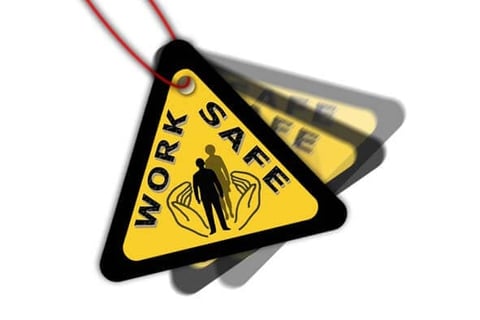The WHS Act Demystified: A Closer Look at Workplace Safety in Australia
Understanding workplace safety is crucial for both employers and employees in Australia. Our latest article breaks down the key physical and psychosocial hazards covered under the Work Health and Safety (WHS) Act, offering practical insights into how businesses can ensure a safe and healthy work environment. Whether you're looking to enhance compliance or simply want to promote well-being at work, this guide is a must-read. Check it out now!
Paul Grech
8/23/20243 min read


In Australia, workplace health and safety (WHS) is governed by the Work Health and Safety Act (WHS Act), which outlines the responsibilities of employers and employees to ensure a safe working environment. The Act covers various physical and psychosocial hazards that can impact workers' health and safety. Here’s an overview of these hazards and relevant aspects of the WHS Act:
Physical Hazards
Physical hazards in the workplace refer to environmental factors that can cause harm to employees. These include:
Manual Handling
Risk: Injuries from lifting, carrying, pushing, or pulling objects.
WHS Act: Employers must provide training on proper lifting techniques and use mechanical aids where possible.
Slips, Trips, and Falls
Risk: Injuries from slippery surfaces, uneven flooring, or obstacles.
WHS Act: Regular maintenance and housekeeping to ensure walkways are clear and safe.
Noise
Risk: Hearing loss from prolonged exposure to high noise levels.
WHS Act: Employers must assess noise levels and implement control measures, such as providing hearing protection.
Machinery and Equipment
Risk: Injuries from moving parts, electrical faults, or equipment malfunctions.
WHS Act: Proper maintenance, use of guards, and employee training on safe operation.
Electrical Hazards
Risk: Electric shocks, burns, or fires from faulty wiring or equipment.
WHS Act: Regular inspection and maintenance of electrical systems and equipment.
Chemical Exposure
Risk: Health issues from exposure to hazardous substances.
WHS Act: Safe storage, handling procedures, and use of personal protective equipment (PPE).
Fire and Explosions
Risk: Injuries or fatalities from fires or explosions.
WHS Act: Fire safety plans, proper storage of flammable materials, and fire-fighting equipment.
Ergonomics
Risk: Musculoskeletal disorders from poor workstation design.
WHS Act: Ergonomic assessments and adjustments to workstations to prevent strain injuries.


Psychosocial Hazards
Psychosocial hazards refer to workplace factors that can affect employees' mental health and well-being. These include:
Workplace Stress
Risk: Mental health issues from excessive workload, unrealistic deadlines, or lack of support.
WHS Act: Employers must monitor workload, provide adequate support, and implement stress management programs.
Bullying and Harassment
Risk: Psychological harm from repeated unreasonable behavior towards an employee.
WHS Act: Anti-bullying policies, reporting mechanisms, and training on respectful behavior.
Violence
Risk: Physical or verbal abuse from clients, customers, or colleagues.
WHS Act: Security measures, training in conflict resolution, and support for affected employees.
Fatigue
Risk: Reduced performance and increased risk of accidents from excessive working hours or shift work.
WHS Act: Manage work schedules to allow adequate rest and recovery time.
Job Insecurity
Risk: Anxiety and stress from uncertainty about employment status.
WHS Act: Transparent communication about job security and organizational changes.
Work-Life Balance
Risk: Stress from difficulty balancing work and personal life.
WHS Act: Flexible working arrangements and support for work-life balance initiatives.


Employer Responsibilities under the WHS Act
Employers have a duty of care to:
Identify Hazards: Regularly assess the workplace to identify potential hazards.
Assess Risks: Evaluate the risks associated with identified hazards.
Implement Controls: Apply measures to eliminate or minimize risks, using a hierarchy of controls (elimination, substitution, engineering controls, administrative controls, PPE).
Monitor and Review: Continuously monitor the effectiveness of control measures and make adjustments as needed.
Provide Training: Ensure employees are adequately trained to perform their tasks safely and understand safety procedures.
Consultation: Engage with employees on health and safety matters, encouraging feedback and participation in safety discussions.


Employee Responsibilities under the WHS Act
Employees also have a duty to:
Follow Procedures: Adhere to workplace safety policies and procedures.
Use PPE: Correctly use personal protective equipment provided.
Report Hazards: Inform their employer of any hazards or unsafe conditions.
Cooperate: Participate in safety training and initiatives.


The WHS Act in Australia provides a comprehensive framework to manage physical and psychosocial hazards in the workplace. Employers and employees must collaborate to identify, assess, and control these hazards to create a safe and healthy work environment. Adhering to the WHS Act not only ensures compliance with legal requirements but also promotes the overall well-being and productivity of the workforce. For further training regarding the above risks contact Delator Investigation Training.




